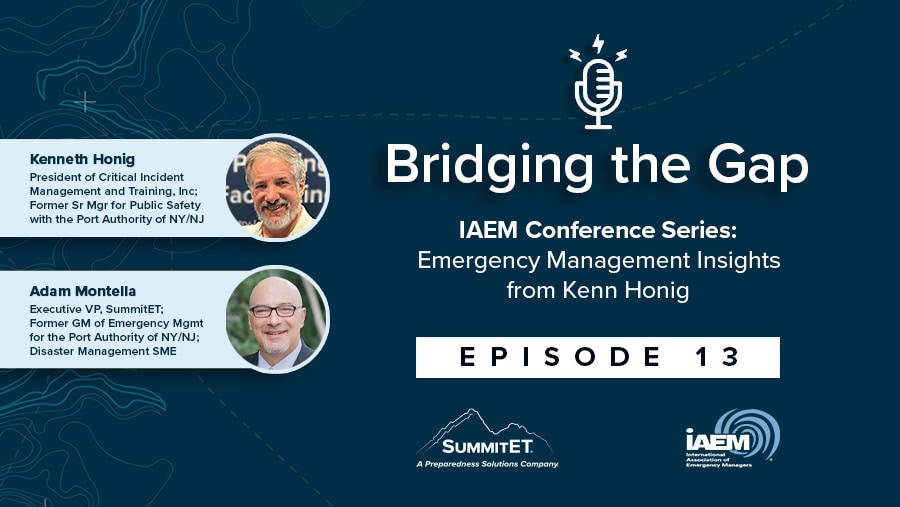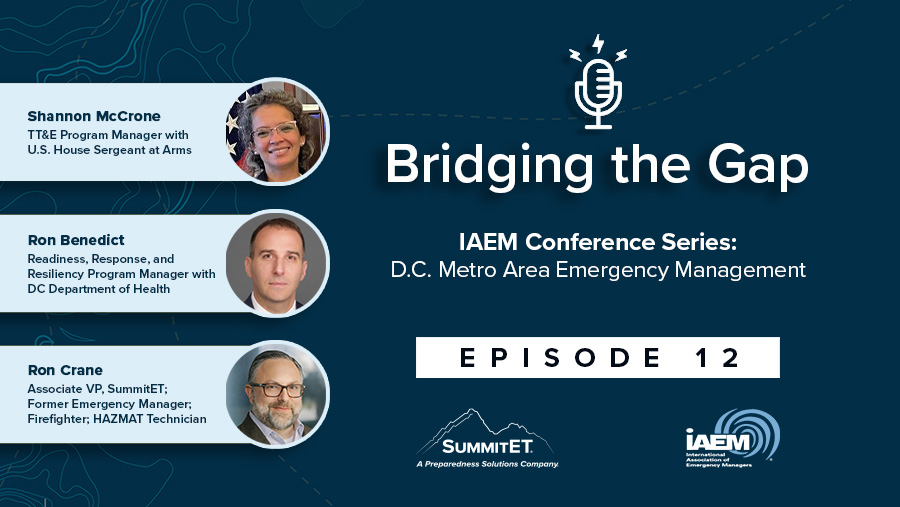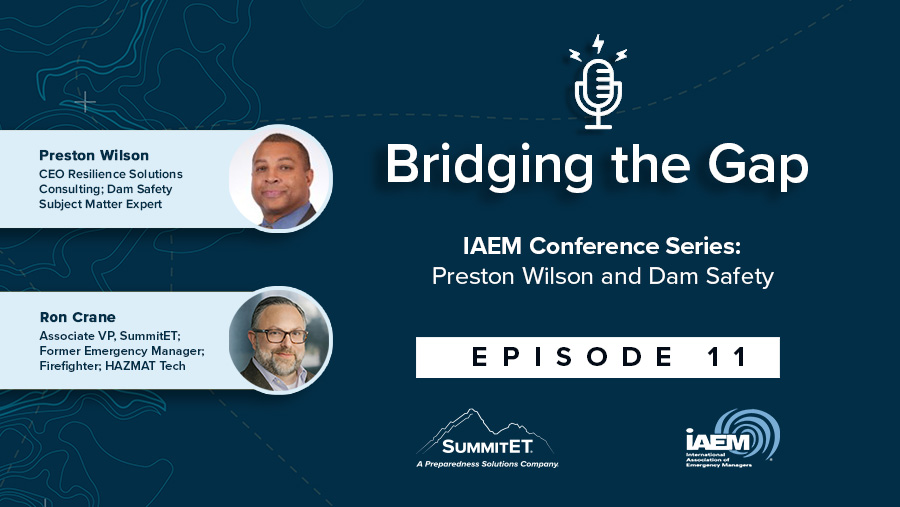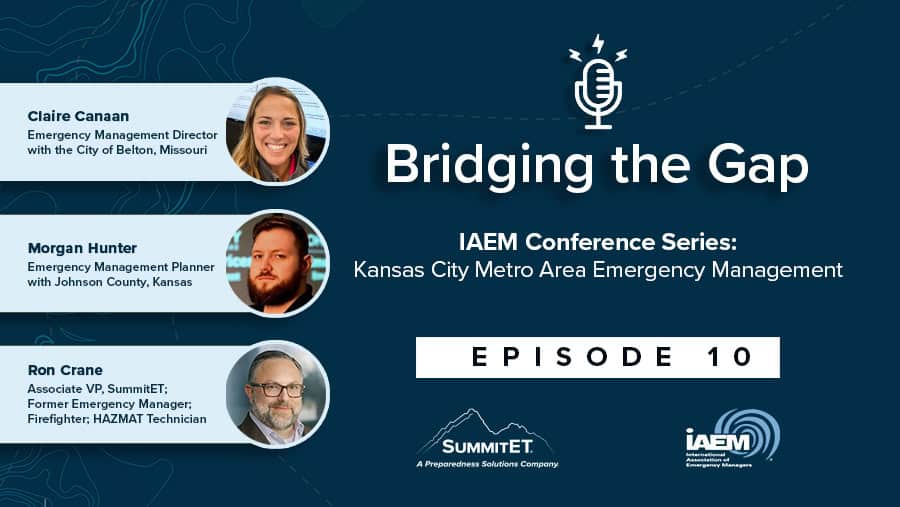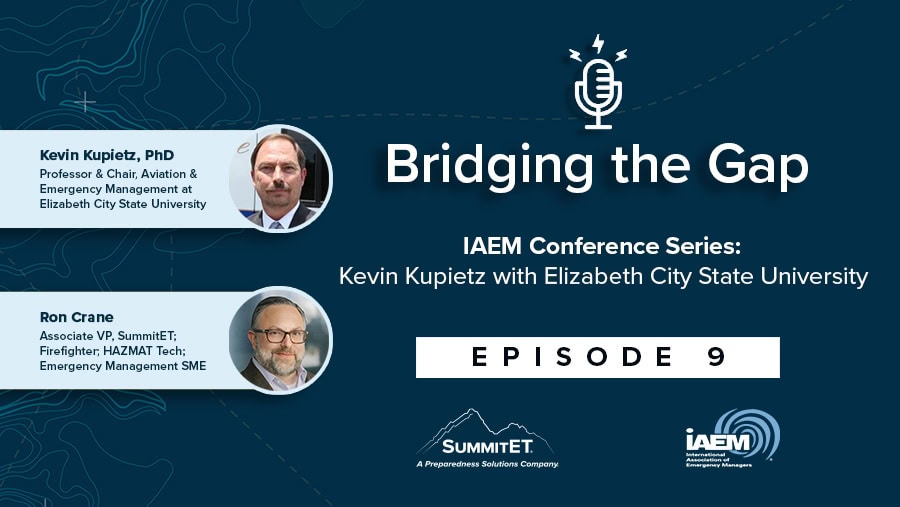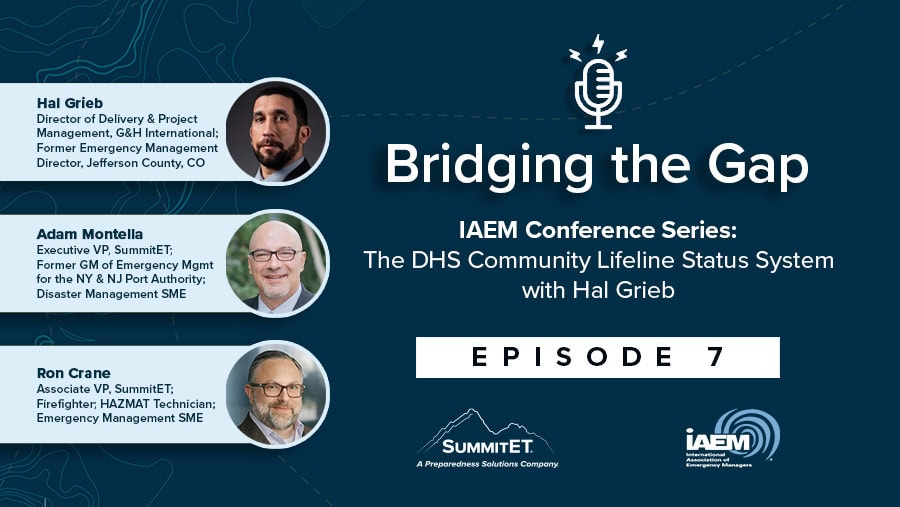Ron Crane of SummitET sits down with Jeremy Urekew, Senior Project Manager at Garner Environmental Services, at the 2024 International Association of Emergency Managers (IAEM) Conference.

In this IAEM Conference Series episode of SummitET’s podcast Bridging the Gap, Ron Crane of SummitET and Jeremy Urekew discuss ideas for improving challenges in the Emergency Management field. Jeremy has a background in emergency management, fire service, hazmat response, and counterterrorism work. With 25 years of experience in the public sector, he moved to the private sector by joining Garner Environmental Services, Inc., a disaster and emergency response company headquartered in Houston, TX.
Challenges in Emergency Management
A common issue in the field is municipal governments’ lack of resources during disaster response, according to Jeremy. This might include financial resources, staffing, access to materials, etc.
“Being able to take any load off of an emergency manager’s plate is critical during a disaster response.“
Jeremy believes there is a strong need for better public-private collaboration in disaster response. Aligning private sector capabilities with public sector needs during emergencies involves establishing partnerships and trust among organizations before disasters occur. Conferences such as IAEM facilitate this by helping emergency managers build relationships with private sector entities, which can be important during disaster response.
Garner’s Footprint in North Carolina
Hurricane Helene caused significant damage and loss of life in in Florida, Georgia, North Carolina, South Carolina, Tennessee, and Virginia after making landfall on September 26, 2024. North Carolina was especially impacted, with over 100 deaths, thousands of homes destroyed, and widespread loss of critical services like water, sewer, electricity, telecommunications, and healthcare.
“Day 1, there’s no power, there’s no water. And if there’s no water, there’s no sanitation.“
Jeremy deployed on a team to North Carolina as a representative for Garner where they worked to bring in sanitation components from across the U.S. and build “sanitation camps” for communities to include laundry, showers, restrooms, etc.
Garner set up a temporary logistics staging area that continues to evolve as, at their peak, the organization was supporting 350 different missions including armed security, water pressurization, critical infrastructure, and sanitation. When the public sector’s resources have been negatively impacted by the disaster, private organizations like Garner can step in to help.
“We’re the green light, give us a buzz.“
Garner prioritizes the sustainability of the communities it supports, so that they can continue their search and recovery efforts while getting back on track.
Building Trust and Partnerships in Emergency Management
A significant challenge working in the field of Emergency Management is the ability to trust others when responding to a disaster. The tendency for an emergency manager is to want to rely on the team they know and have trained with, but this limits the response capability. As a means to overcome this difficulty, it’s important to network and make connections ahead of a disaster. Events like IAEM are a great opportunity to connect with other emergency managers and build new partnerships.
Advice for New Emergency Managers
Jeremy advises new emergency managers to focus on gaining qualifications and real-world experience rather than just certifications. He emphasizes the importance of being able to perform tasks effectively and suggests supplementing public sector capabilities with private sector expertise when needed.
Meet the Experts Featured in This Podcast

Jeremy Urekew
Senior Project Manager, Garner Environmental; HAZMAT Tech, CBRNE SME, Emergency Manager

Ron Crane
Associate VP, SummitET; Firefighter & HAZMAT Technician; Emergency Management SME
Visit our Terms & Conditions

